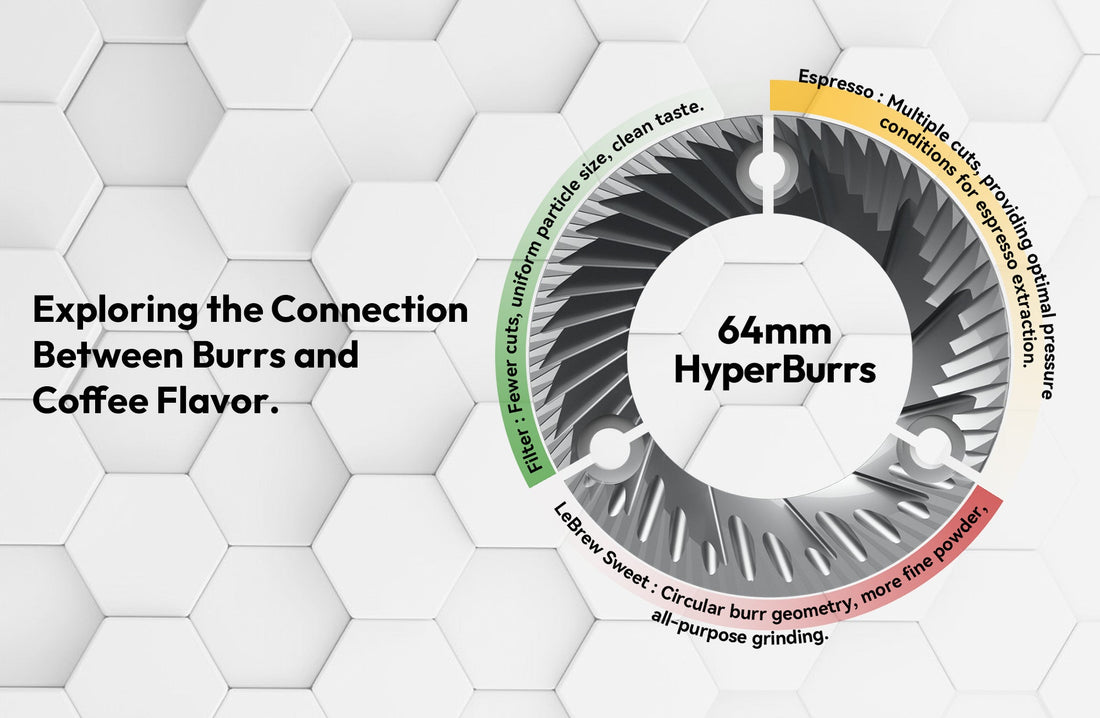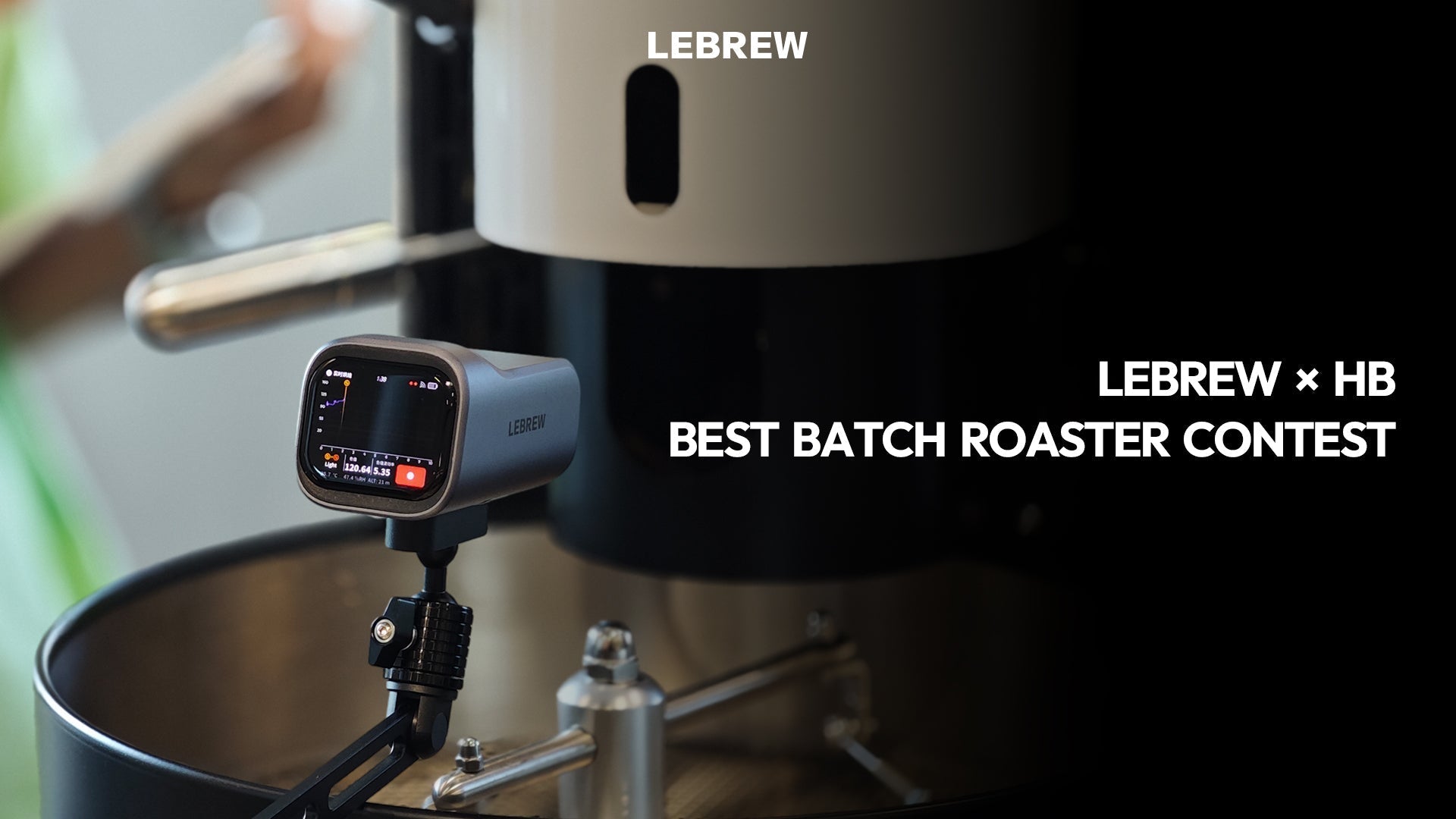Exploring the Connection Between Burrs and Coffee Flavor

Abstract
The structure of the coffee burrs, their cutting method, and sharpness affect the particle size of the coffee grounds, which in turn influences the flavor and taste during brewing. Different particle size distributions and fine powder ratios introduce various interesting changes during brewing, impacting extraction rates and the balance between acidity and bitterness. This article delves into the various effects that burr structure and particle size distribution have on the coffee extraction process.
Table of content
1. Relationship Between Particle Size Distribution and Burr Cutting Method
First, let's understand what particle size distribution is. The particle size distribution of coffee refers to the proportion of coffee grounds of different diameters after grinding a certain amount of coffee beans. A higher proportion of a single diameter means that the size of the coffee grounds is more concentrated, reflecting a more uniform grind in terms of coarseness. The cutting method and design of the burrs greatly impact the particle size distribution.Burrs on the market generally fall into three main categories:
- Filter burrs, which primarily aim to reduce fine particles and concentrate particle sizes while minimizing the number of broken coffee beans. The burr design focuses on cutting, resulting in a more concentrated particle size and fewer fine particles.
- Espresso burrs, designed with multiple crushing paths or circular paths to increase the fine powder content. This makes it easier to build extraction pressure during espresso brewing. The burr structure incorporates multiple crushing or grinding layouts, leading to higher fine particle peaks, which stabilize flow rate and create quick pressure buildup, resulting in a richer flavor profile in espresso.
- All-purpose burrs, which are compatible with both espresso and pour-over coffee grinding. These burrs typically have a fine powder peak between those of espresso and pour-over burrs. The design of the triangular area may be more concentrated. Some all-purpose burrs can even be used for Turkish coffee grinding, such as the LeBrew Hyperburrs 64 Sweet burr.

In burr design, cutting-focused burrs that reduce crushing times help improve particle size concentration and reduce the fine powder peak, while burrs with crushing paths or grinding functions increase the fine powder peak and produce a broader particle size distribution.
2. Extraction Rate
Coffee concentration and extraction rate are key factors in determining the strength and flavor profile of brewed coffee. Extraction refers to the process of grinding roasted coffee beans and infusing them with water, where the surface of the coffee particles is surrounded by water, allowing water-soluble compounds to dissolve and extract the aromatic compounds and soluble components from the coffee cell walls. Different burrs, even under the same grind, will have different particle size uniformities and fine powder contents, which will result in varying extraction rates and concentrations.

Different particle size distributions affect the extraction rate. The ratio of fine powder also significantly influences acidity; excessive concentration suppresses acidity, while higher fine powder content releases more flavor compounds. Therefore, coffee enthusiasts who prefer bright acidity may opt for burrs with a lower fine powder ratio, while those who enjoy a stronger acidity and sweetness may choose burrs with a certain proportion of fine powder.
3. How Grind Consistency Enhances Aroma and Flavor
3.1 Particle Size Concentration
The burr design of a grinder is the primary factor influencing coffee ground particle size. The number of crushing stages affects the proportion of fine particles, while the triangular design of the burr influences how evenly the coffee grounds are shaped. In terms of burr structure, particle size concentration and fine powder content are the main distinguishing factors.
The uniformity of the particle size impacts the aroma and layers of the brewed coffee. More uniform particles lead to a more concentrated expression of flavor and aroma. Concentrated particle sizes help achieve an even extraction, whereas a broader particle size distribution can provide a more layered and complex flavor profile, similar to how the RD value in roasting influences the taste complexity.
3.2 Fine Powder Content
Fine powder is crucial for espresso extraction, as it helps build pressure quickly, stabilizes flow rate, and enhances mouthfeel, resulting in a more robust and stable extraction. In pour-over coffee, fine powder also plays an important role in enhancing flavor intensity and sweetness. A well-balanced burr designed for pour-over brewing should have an appropriate fine powder content and a high particle size concentration, achieving a balance between flavor clarity and complexity.

4. The Potential Impact of Burr Temperature Control on Coffee Flavor
During the grinding process, aromatic hydrocarbons are volatilized, and some oxidation may occur. Raw coffee beans contain a variety of organic acids, monosaccharides, polysaccharides, and amino acids, which form numerous flavor compounds during roasting. Aromatic hydrocarbons, which have an aromatic ring structure, are volatile compounds in coffee beans, contributing significantly to the flavor experience. A high-quality burr and grinder should feature excellent temperature management during grinding to minimize heat build-up, thereby preventing the potential loss of aromatic hydrocarbons and maintaining flavor integrity.

5.How Grinding Affects Espresso Flavor
Fine powder is crucial in espresso preparation. It helps create a stable pressure environment during extraction, stabilizing flow rate and enhancing mouthfeel, ensuring a fuller and richer flavor. If a burr designed for pour-over coffee is used for espresso brewing, the lower fine powder content might result in unstable flow rate, leading to under-extraction and a thinner taste. The burr’s triangular design that shapes the coffee grounds may not contribute effectively to stable pressure during espresso extraction, further exacerbating the issue.
6.Conclusion
The design and structure of coffee burrs play a critical role in determining the grind quality and the resulting flavor of brewed coffee. Understanding how burr cutting methods, particle size distribution, and other factors such as burr sharpness, hardness, and temperature control influence the grinding process can help coffee enthusiasts select the right burrs for their preferred brewing method. By optimizing burr design, we can unlock the full potential of coffee beans, enhancing both the consistency and complexity of the coffee experience.
If you have any questions or suggestions regarding this article, please feel free to contact us at:
service@lebrewtech.com



